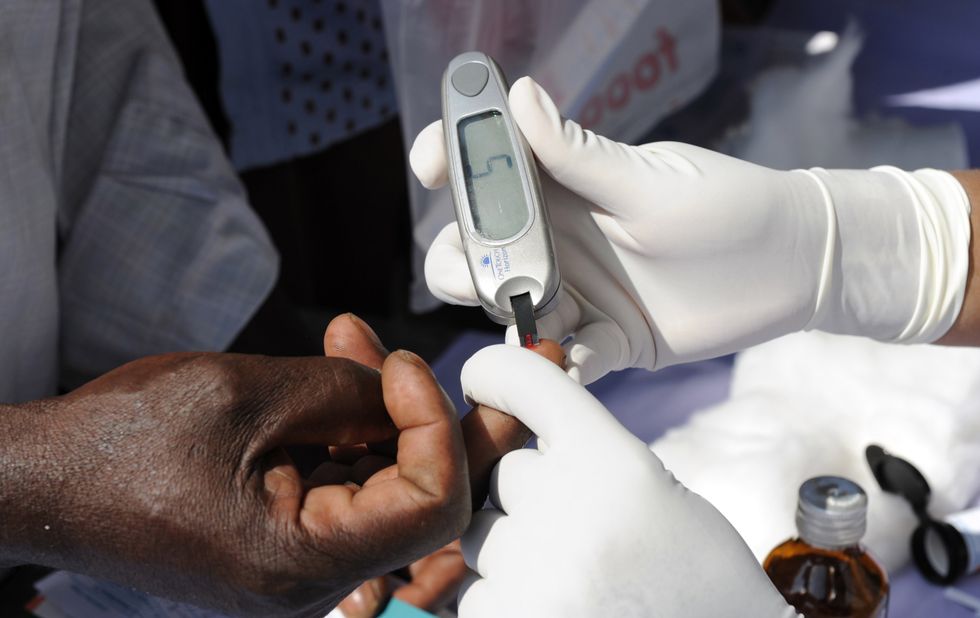
An Indian nurse (R) collects a blood sample from a patient using a glucometer at a free diabetic health check-up camp in Hyderabad on November 1, 2009. (NOAH SEELAM/AFP/Getty Images)

A new report published in BMJ Open Diabetes Research & Care, an academic medical publication, claims there is a clear connection between rising global temperatures and type-2 diabetes, but skeptics say this is just another example of climate alarmism.
According to the report, titled “Diabetes incidence and glucose intolerance prevalence increase with higher outdoor temperature,” for every 1 degree Celsius increase in temperature, there is an age-adjusted diabetes incidence increase of 0.314 per 1,000 people.
The report’s authors state in their conclusion, “Our findings indicate that the diabetes incidence rate in the USA and prevalence of glucose intolerance worldwide increase with higher outdoor temperature.”
In a report published by the Huffington Post, one of the co-authors of the studies reportedly said the connection may be caused by higher temperatures’ effect on brown fat or climate-related links between exercise patterns, diets and higher temperatures.
Lisanne Blauw, one of the co-authors of the report, which was authored by a team of seven Dutch researchers, said their results add something important to the global warming conversation.
“When it gets warmer, there is higher incidence of diabetes,” Blauw told the Huffington Post. “It’s important to realize global warming has further effects on our health, not only on the climate.”
Writing at Watts Up With That, an influential website questioning the theory of manmade global warming, Eric Worrall said the Dutch researchers’ data “seems quite noisy” and contains some puzzling contradictions.
“The state of South Carolina (average annual temperature 63F) shows a strong correlation between diabetes and temperature, but the state of Louisiana (average annual temperature 69F) shows a strong negative correlation,” wrote Worrall. “Arizona (average annual temperature 75F) also shows a negative correlation.”
Worrall says factors other than higher temperatures offer better explanations.
“In addition, the impact of the factors the study attempted to adjust for is likely significantly larger than the impact demonstrated by the study,” wrote Worrall.
“For example, the following, from a 2007 study of body mass index vs diabetes, shows a strong relationship between body mass and diabetes, ranging from below 5% for skinny people to around 25% for very fat people – a far more pronounced effect than the small difference claimed by the climate study above,” Worrall wrote.
Worrall concludes by acknowledging there could be some minor association between temperature and diabetes, but that it’s far more likely other causes explain rising diabetes rates.
“I’m not saying the authors are necessarily wrong, they appear to have made a credible attempt to tease out a small effect from a noisy data set,” wrote Worrall. “But even if they are right, factors other than temperature are far more significant predictors of whether someone is likely to suffer from diabetes.”
[graphiq id="ixedq7ZVdQN" title="Mortality From Diabetes Mellitus by State" width="600" height="803" url="https://sw.graphiq.com/w/ixedq7ZVdQN" frozen="true"]
Justin Haskins